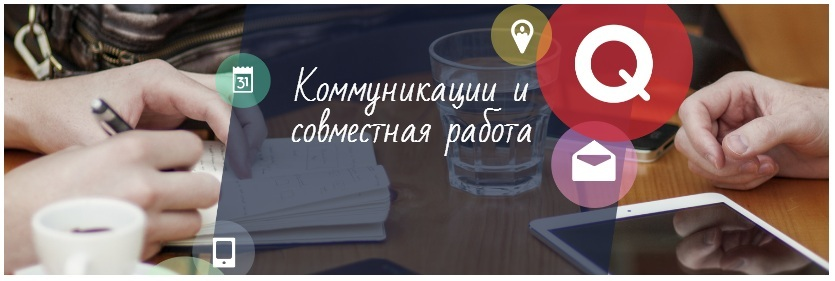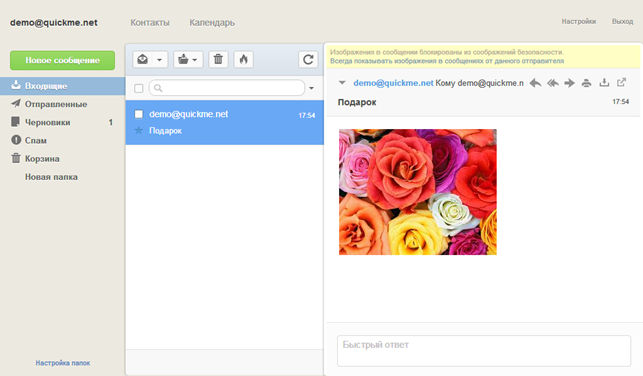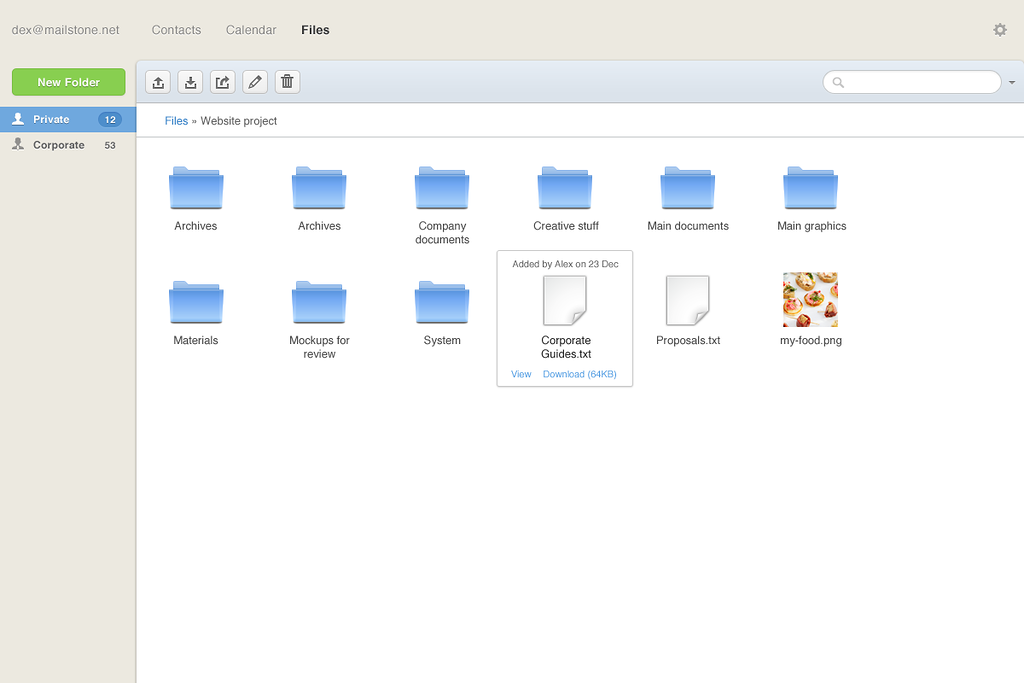How to create and earn money on SaaS (Part 4 / StartTap Quickme - communication and collaboration of small teams)

In January of this year, we launched the Startme Quickme- SaaS service, which lies at the junction of unified communications (UC) and collaboration tools. With today's article in the How to Create and Sell SaaS series, I want to talk about a few important points in creating Quickme that influenced the overall result. The first point is why we have created exactly this functionality and Quickme features, and the second which approaches formed the basis of the service and product creation philosophy that helped us to get as far as possible from the niches of existing solutions (competitors) and adapt Quickme to the needs of small distributed teams.
Quickme philosophy
Organically Quickme grew out of the mail business. Definitely, mail is a tool that plays key roles in business communications and will remain for a long time the application that an employee opens first on the desktop of a laptop at the beginning of a working day (analytics of the use of communication channels by users ). The development strategy of Quicke lay in the field of building up working communications (the Calls module appeared) and business components - Support, Files (although the latter is more of a system history). In the last development vector, we started with the User Support module and in the future we plan to release a Task Manager. The support itself is BPaaS and with great stretch it can be argued that this is communication (the sequence of changing standard paradigms will be outlined later).
The last module in our BANDLE Files (File Storage) and we see it as a communication tool, including - employees not only store files, but also actively share files, links to them within the company through folders and links with partners and customers. Thus, we have gathered around the unified Quickme service the communication components of various work toolkits and automation sections, adding to this the collaboration capabilities - Global Address Book, Shared Employee Calendars, Shared Folders.
')
When discussing the development strategy, positioning and functionality of the product, we tried to select communication components from each module being created and unite the product packaging around them.
This does not mean that we simply took and turned the world upside down - this means that we are able to see the world from a particular point of view. For example, this is how it was with “Support” . Everyone understands that in large companies support is the implementation of the Pink Elephant standards, which defines the process of customer support - in the context of the executive officer, the time to complete the application, and so on ... - through the general address of support and the form on the company's website. In addition, we have simplified the hierarchy of responsibility - all company employees can respond to requests for support and visualized communication in a general chat, when all applications fall into the common interface space of the system. With such approaches we won in several key points - simplified understanding of the work tool, removed unnecessary functionality for an unnecessary small team, made a decision in a short time without losing the quality of automation of the needs of small teams. In fact, we abandoned the implementation of employee hierarchies (a couple executive-manager) and abandoned a large part of the functionality — administration of access rights.
To introduce “Support” in our case is to select the e-mail address and insert the script on the company's website - everything is ready!
Where we did not want to go when developing the service.
• We did not include in the solution, inherent in UC chats, video calls. In this case, we have turned into another conservative product and strongly wanted not to be limited by the conservative classifications of software solutions for business.
• Did not want to compete with Skype or numerous video conferencing services
• They didn’t go into the socialization of services, understanding that in companies focused on operational activities - chain stores, HORECA, there is no place for likes.
What we did
Quickme is a simple service of multi-level communications of employees within the company, with customers and partners. Quickme communication is
• Sending an email
• Call from the browser
• File sharing links
• Accepting applications to the support service through forms on the company's website
Quickme Interface Examples

Mail client interface

The calendar

File storage
For whom we did the service
For small b2b companies that have:
• customer or service business
• the structure of which has an internal support service
• there is a need for organizing communications with counterparties
• there is the task of making part of the data in third-party cloud storage
About our strengths
• Web generation
• Beautiful and simple interface. We didn’t write manuals for users, but simplified the process of setting up so that my 4th year old daughter could work with the service (at least with mail, dragging files into the letter area, rather than using multi-step button-clip attaching tools .
• Of our technological advantages - Quicme is a multi-tenant solution, we implemented a dynamic allocation of disk space within the framework of a tennant company.
• use to work all the benefits of HTML 5.
• We are fast - if you wish, you yourself can experiment with many similar services.
• In difficult closed test drives we lose to the leaders. but we have a number of non-product advantages over them and this in private conversation.
• About our policies in the work with the partner channel, the approaches of development and development we wrote in previous materials
• Experience with global hosting providers.
• Possible integration with technology partners
Today Quickme is Business Mail Calls, Support, Files.
If it speaks of the company's strategy in the market, then we rely on work through partners - I wrote about this in previous parts of the article and on launching free mail services for domains and file storages in one employee’s work environment. We plan to provide free of charge up to 30 mailboxes - since we are focused on small business companies. The launch of the last service is scheduled for early summer.
In the comments, we would like to hear the views of readers of a respected resource about the service and maybe try to change something based on these opinions. Thank you and in the following parts of the series of articles we will talk about failures in SaaS (not by our example).
Quickme demo
Alexey Kalachnikov - Director for Alliances and Partners
www.Quickme.ru - the optimal content of cloud providers offer
Blog author http://www.bootstrap24.ru/
Materials series "How to create and earn on SaaS"
- Part I / remove all unnecessary, hit the target, experiment
- Part 2 / invaluable experience of Russian ISV
- Part 3 / sales through an affiliate channel that may not be needed
- Part 4 / Startta Quickme - communication and collaboration of small teams
- Part 5 / pervasive SaaS integration, how nice the threat is to the rest of the software business or how 1 + 1 turns into 3
- Part 6 / Quickme story for partners or 7 reasons to do things together
- Part 7 prefinal / why not sell SaaS?
- Part 8 - FINISH / SaaS - the realities of the Russian market
- Accidentally forgotten Part 9 / Legal SaaS fog
- Part 10 / Business Model Metrics
- Part 11 / Cloud Services Reviews / UX and Usability Testing
Source: https://habr.com/ru/post/218873/
All Articles